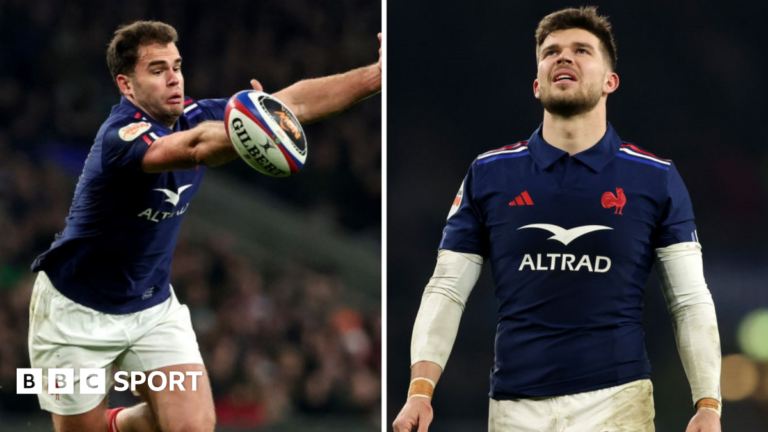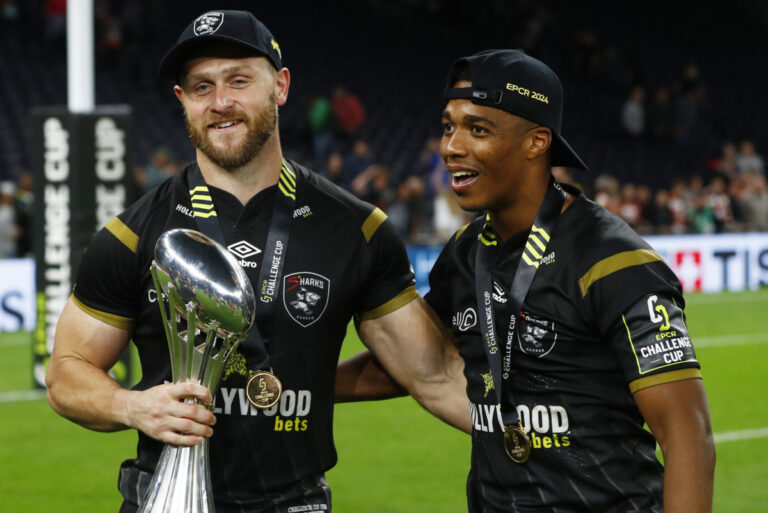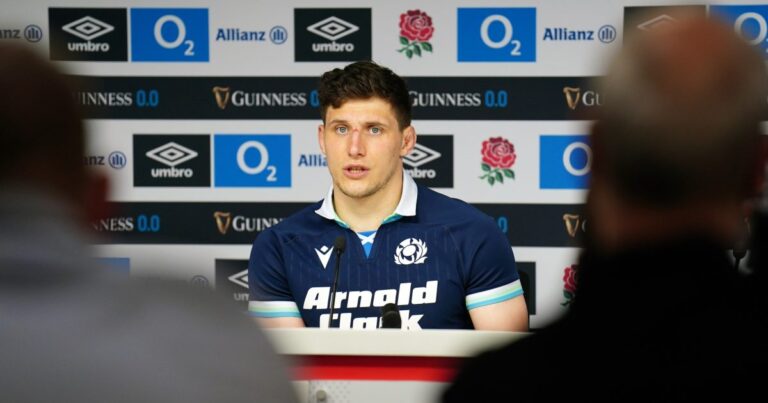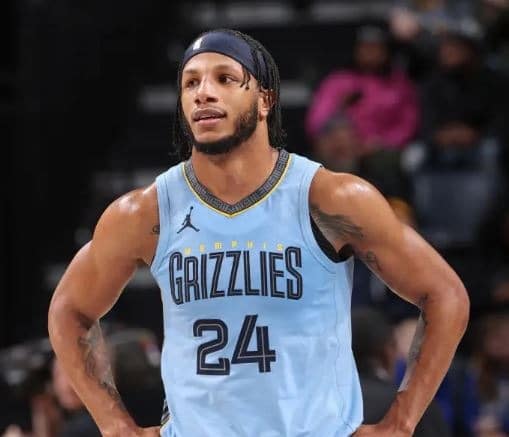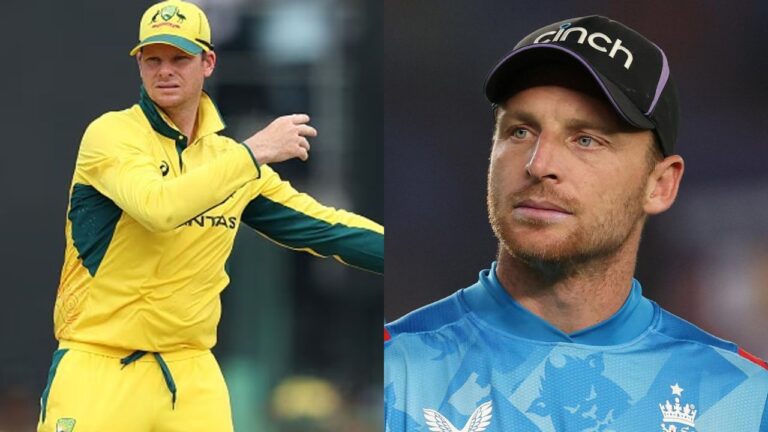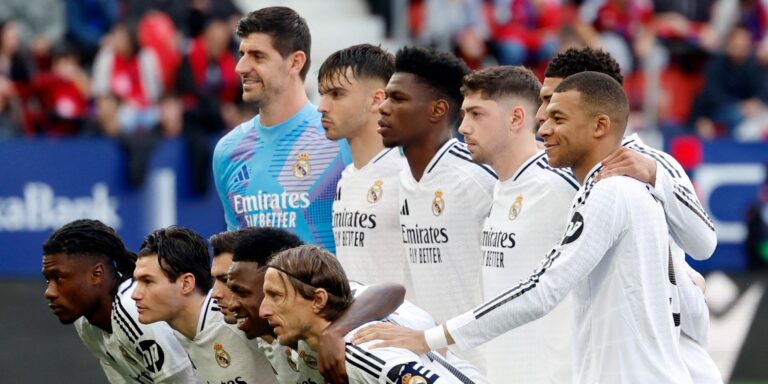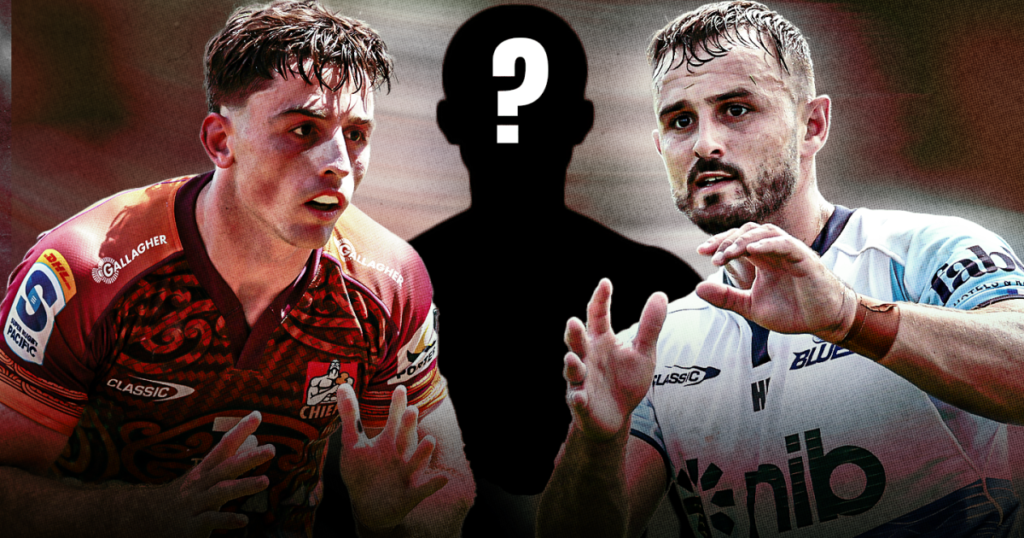
Maybe Covid-19 did us some favours after all, despite the terrible carnage wreaked. It helped show people, in the UK at least, working from home was not only possible but desirable. Hundreds of thousands began to work remotely from their laptops, and ‘Zoom’ into work without ever moving a muscle.
Remote working, remote buying, we live in an era when the world comes to us instantly, on digital command, rather than vice versa. One push of the ‘Enter’ button is enough to make it so.
Ex-Crusaders number 10 Richie Mo’unga appears to be having the same impact on New Zealand. The longer he stays in Japan, the more the question of overseas selection in the All Blacks, and particularly the options at 10, seem to be pulled by his magnetic orbit from afar.
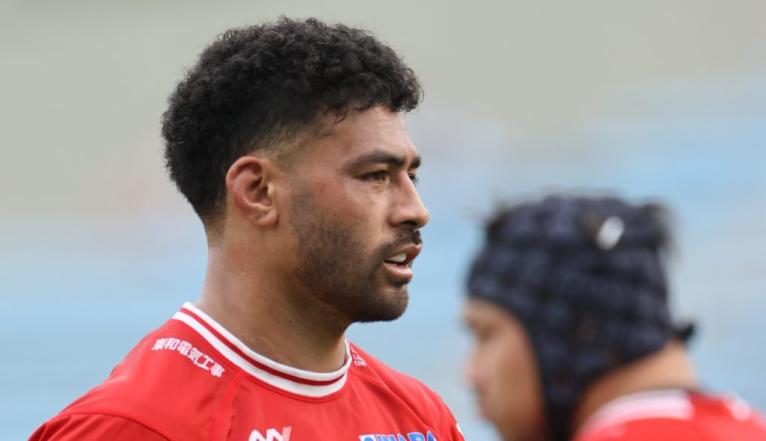
At the end of 2024, All Blacks head coach Scott Robertson ruminated [again] on the possibility of selecting overseas players. Naturally using the format of a Zoom call with a virtual assembly of Kiwi media at the end of the November tour, he observed:
“We don’t want to be a cycle behind or a couple of years behind. Professional rugby is always evolving. Let’s keep an open mind and see what’s next. I’ll definitely be presenting.
“Using South Africa as an example, they get the opportunity to use a lot of experienced [overseas] players who are looked after and managed well into their thirties, so they’ve got a great balance.
“And they’ve got big squads, they can have two really quality fifteens.
“What’s right for all of our game? How do we create it so we still get the best players, we’ve still got the best competitions and we’ve still got the best All Black group?
“You might look at the guys that have shown a lot of loyalty to us [like Richie], so there’s an avenue for them.”
Last weekend, it became obvious the national coach and the chief executive of New Zealand Rugby, Mark Robinson, are far from being on the same page regarding the criteria for national eligibility. In a radio interview, Robinson first lauded the NZ-only policy which had “served the game incredibly well for a long period of time’’ before giving Razor a sharp, if remote, rap over the knuckles:
“I think Razor would probably be the first to admit that he might have been a little bit clearer with the way he spoke about it last year.
“He 1740096290 understands all the tools and flexibility we do have around [selection] policy with the way sabbaticals work, and other terms we have in that policy.
“We are very aligned. Razor himself – the whole organisation – is very clear that the policy is in place for very good reasons.”
Some sheep are not brought back into fold quite so easily. The All Blacks are currently ranked ‘only’ number three in the world and NZR is shedding sponsors like old skin. Only last week, the Ineos chemicals company owned by Manchester United benefactor Sir Jim Ratcliffe announced it would be ‘adjusting its sponsorship’ agreement with NZR due to negative impacts on its business. For ‘adjustment’, read ‘withdrawal’.
Ineos’ sponsorship of New Zealand’s national rugby teams is worth $8m NZD per annum, but the host union felt compelled to launch legal proceedings after the first instalment of the 2025 fee went unpaid, only halfway through the original six-year agreement. The All Blacks’ brand has to be seen to be ultimate sporting success story to attract and sustain sponsorship, which spools the debate all the way back to selection policy and Razor’s ability to pick players plying their trade abroad.
That’s the macrocosmic scale, the on-field microcosm is the difficulty coaches of the five Super Rugby franchises are having introducing new blood successfully to the number 10 position. Two of the next generation of first five-eighths, 26-year-old Harry Plummer of the Blues, and 25-year-old ex-Crusader Fergus Burke have either moved north or are planning to do so. Burke has already been selected to the senior Scotland squad from his club Saracens, while Plummer is heading to the Top 14 and the Auvergne on a three-year deal after the conclusion of the current Super Rugby Pacific season.
Plummer and 23-year-old Josh Jacomb found themselves in direct opposition in round one of SRP 2025, in a repeat of last year’s final between the Blues and the Chiefs. What appeared to be clear selectorial statement of intent by the two coaches [Vern Cotter and Clayton MacMillan] was first blurred, then reversed completely by the course of events.
Plummer and Jacomb were picked as the starting fly-halves, with the two incumbent All Black 10s from last year, Beauden Barrett and Damian McKenzie, dropping back to the respective 15 jerseys. Surely this would be an ideal opportunity for the newer men to showcase their wares?
Not one bit of it. The raw stats told a very different story: Plummer was picked as the Blues pivot, but he kicked six times to Barrett’s 10; Jacomb kicked on even fewer occasions, four times to D-Mac’s 12. A closer comparison between the two nominal play-making Chiefs exposed an even bigger gulf. The following table describes touches at first receiver.


When the Chiefs wanted power at the front of the play, they went to their go-to forward [Luke Jacobson] and their go-to back [Quinn Tupaea]. When they wanted playmaking off it, and the right balance between run, pass and kick, they went to McKenzie almost three times more than Jacomb.
Another table describing decisive contributions – breaks, busts, and assists for both – provides an even more stark comparison.

Jacomb was on the field for the first 51 minutes, D-Mac played the full 80. During the time with Jacomb at 10 and McKenzie at 15, the Chiefs were losing 6-14. After Damian moved to 10 for the final half-hour, the visitors won the remainder of the game 19-0.
Hard as McMillan tried to patch up the play-making imbalance after the match, it is doubtful anyone was buying.
“If we had a couple more backs available, then it may well have been that Damian started on the bench,” he said. “But that wasn’t the case, so he started at the back. He’s our guy, you know he’s our 10. The other guys are talented and chasing him, but tonight Josh got an opportunity and I thought he did extremely well.”
In fact, Jacomb’s involvements were restricted to shovel-on passes and clearance kicks and there was not the faintest hint of what he might be able to accomplish as a play-maker. When the Chiefs needed to win the game, they shifted McKenzie to 10 to do it, and he was ably supported by other outstanding performances from Quinn Tupaea at 12, Leroy Carter on the right wing and Cortez Ratima as the finisher at nine.
The question that faces New Zealand rugby in the microcosm is not so much, ‘how to select a younger talent at 10 and build his experience?’ but, ‘How to pick that talent and put it in a position to make meaningful play and win games?’ The name of Mo’unga will continue to crop up until someone else comes along who is good enough to make Kiwi supporters forget it.
In the meantime, there is always D-Mac. In the first attacking sequence from scrum when McKenzie moved to 10, he passed the ball as many times as Jacomb had done in 51 minutes on the field. That yielded a penalty and a kick to the corner, and a try on the following play.
When D-Mac calls for the ball from his front-man [13 Daniel Rona] and heads off on that classic angle to the corner flag, not even a defender as quick in recovery as Rieko Ioane can stay with him.
McKenzie knew just how and when to seek width against the Blues defence, via either a pinpoint cross-kick:
Or, with the double-pump on the pass to take a dangerous blitzer out of the play.
When the Blues play-side wing tried to push up to inhibit the cross-kick, McKenzie was able to put the ball in behind him and send the Aucklanders tumbling back downfield.
Ultimately, the home side had no answer to another of those lethal angled runs toward the corner.
Mo’unga may be on sabbatical in Japan, but absence has if anything increased his importance to New Zealand rugby – as if by remote control. It is not just the man himself and his status as [still] the best 10 the shaky isles has to offer, but the debate around overseas selections he crystallises.
That debate has created a self-evident rift between the head coach of the All Blacks and the CEO of New Zealand Rugby – at least, obvious enough when they are not in the same room together. Does Razor get his way, able to call on the services of Kiwis far and wide to make the All Blacks the number one brand in the rugby world again? That will help consolidate sponsorship rather than bleeding money and good faith out, as in the legal war between Ineos and NZR.
Or does the system walk on without modification, and the national side rely on home-based products exclusively? If it is the latter, then New Zealand will have to find a way to develop the likes of Jacomb far more quickly than they are doing currently. A generation gap has appeared at 10, and thus far at least, the tried-and-trusted development of the young cannot fill an ever-larger all-black hole.
